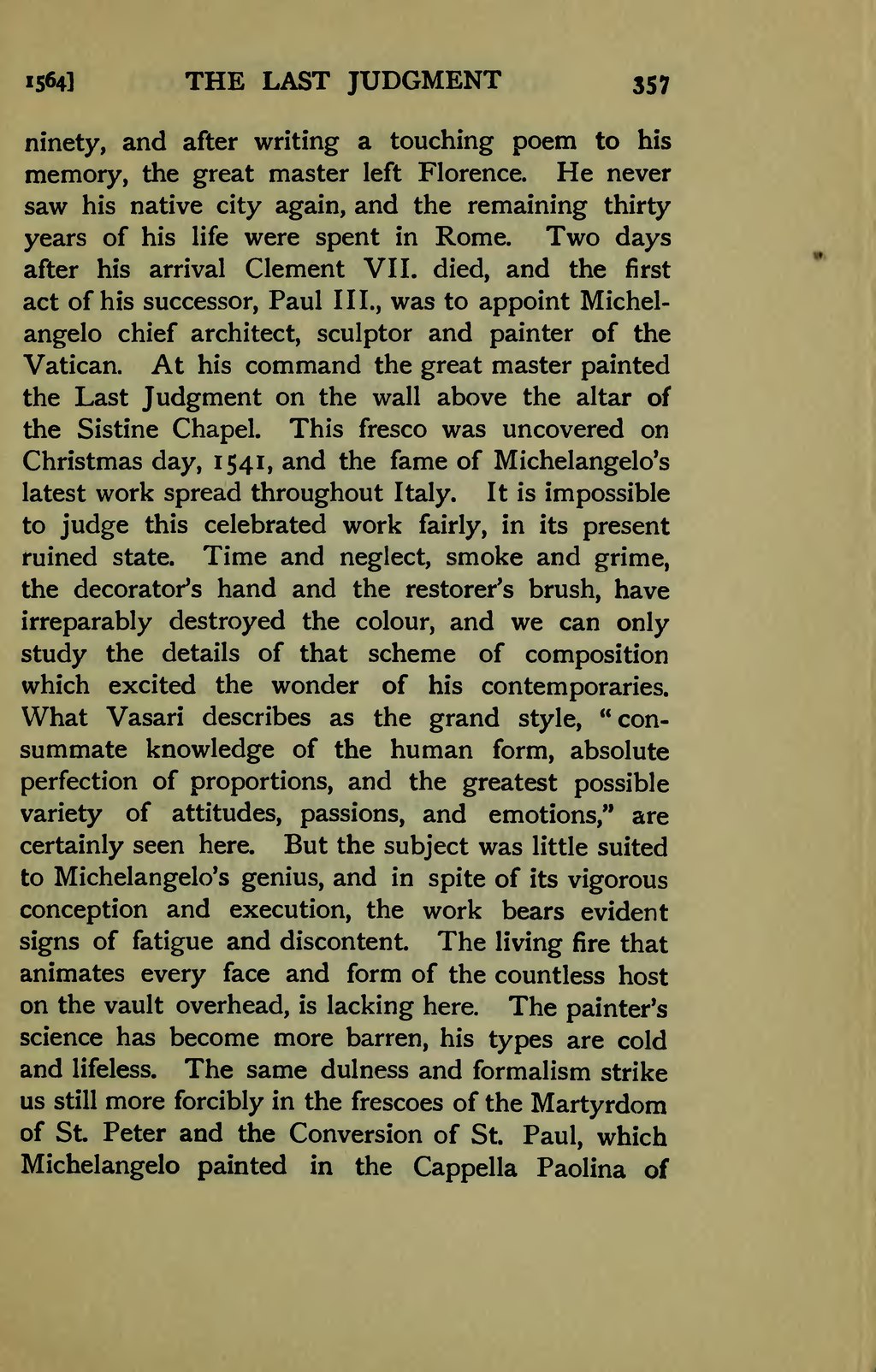ninety, and after writing a touching poem to his memory, the great master left Florence. He never saw his native city again, and the remaining thirty years of his life were spent in Rome. Two days after his arrival Clement VII. died, and the first act of his successor, Paul III., was to appoint Michelangelo chief architect, sculptor and painter of the Vatican. At his command the great master painted the Last Judgment on the wall above the altar of the Sistine Chapel. This fresco was uncovered on Christmas day, 1541, and the fame of Michelangelo's latest work spread throughout Italy. It is impossible to judge this celebrated work fairly, in its present ruined state. Time and neglect, smoke and grime, the decorator's hand and the restorer's brush, have irreparably destroyed the colour, and we can only study the details of that scheme of composition which excited the wonder of his contemporaries. What Vasari describes as the grand style, "consummate knowledge of the human form, absolute perfection of proportions, and the greatest possible variety of attitudes, passions, and emotions," are certainly seen here. But the subject was little suited to Michelangelo's genius, and in spite of its vigorous conception and execution, the work bears evident signs of fatigue and discontent. The living fire that animates every face and form of the countless host on the vault overhead, is lacking here. The painter's science has become more barren, his types are cold and lifeless. The same dulness and formalism strike us still more forcibly in the frescoes of the Martyrdom of St. Peter and the Conversion of St. Paul, which Michelangelo painted in the Cappella Paolina of
Page:The painters of Florence from the thirteenth to the sixteenth century (1915).djvu/409
1564]
THE LAST JUDGMENT
357
